Learn how to expertly cut chicken with my comprehensive guide, covering everything from prepping to cooking techniques. This Just Maika Cooking: Cook’s Notebook section is your go-to resource for all things chicken, offering step-by-step tutorials on breaking down a whole chicken, slicing breasts, and preparing thighs and drumsticks.
Each tutorial is connected to my recipe posts, ensuring you have the skills needed for perfect results every time. The section is updated frequently, so you’ll always find the latest tips and tricks to elevate your cooking game. Ready to prep like a pro? Dive in and master the art of cutting chicken!
Table of Contents
Jump to:
- Perfect Slices Every Time
- Dimond Slit Chicken Breast (Video & Pictures)
- Butterfly Chicken Breast (Pictures)
- Chicken Cutlets (Pictures)
- Panko Breaded (Video)
- Pounding Out (Video)
- Shredding (Video)
- Cutting into Large Chunks (Video)
- Cutting into Small Dice (Video)
- Spatchcock (Pictures & Video)
- Prevent Cross-Contamination
- Searing (Video)
- Marinating (Video)
- Chicken Recipes
- More Cook's Notebook
- Comment or Question?

Perfect Slices Every Time
Half-thawed chicken breasts are much easier to slice into even pieces. You can achieve this by letting frozen chicken breast thaw in your refrigerator the night before. Even pieces are essential to ensure equal cooking time and portion control. Butterfly the tip of the chicken breast by slicing it only halfway.
Look at the last three pictures to get a better overview. Check out how I used this for my Chicken Stir-Fry in Spicy Hoisin Sauce recipe.
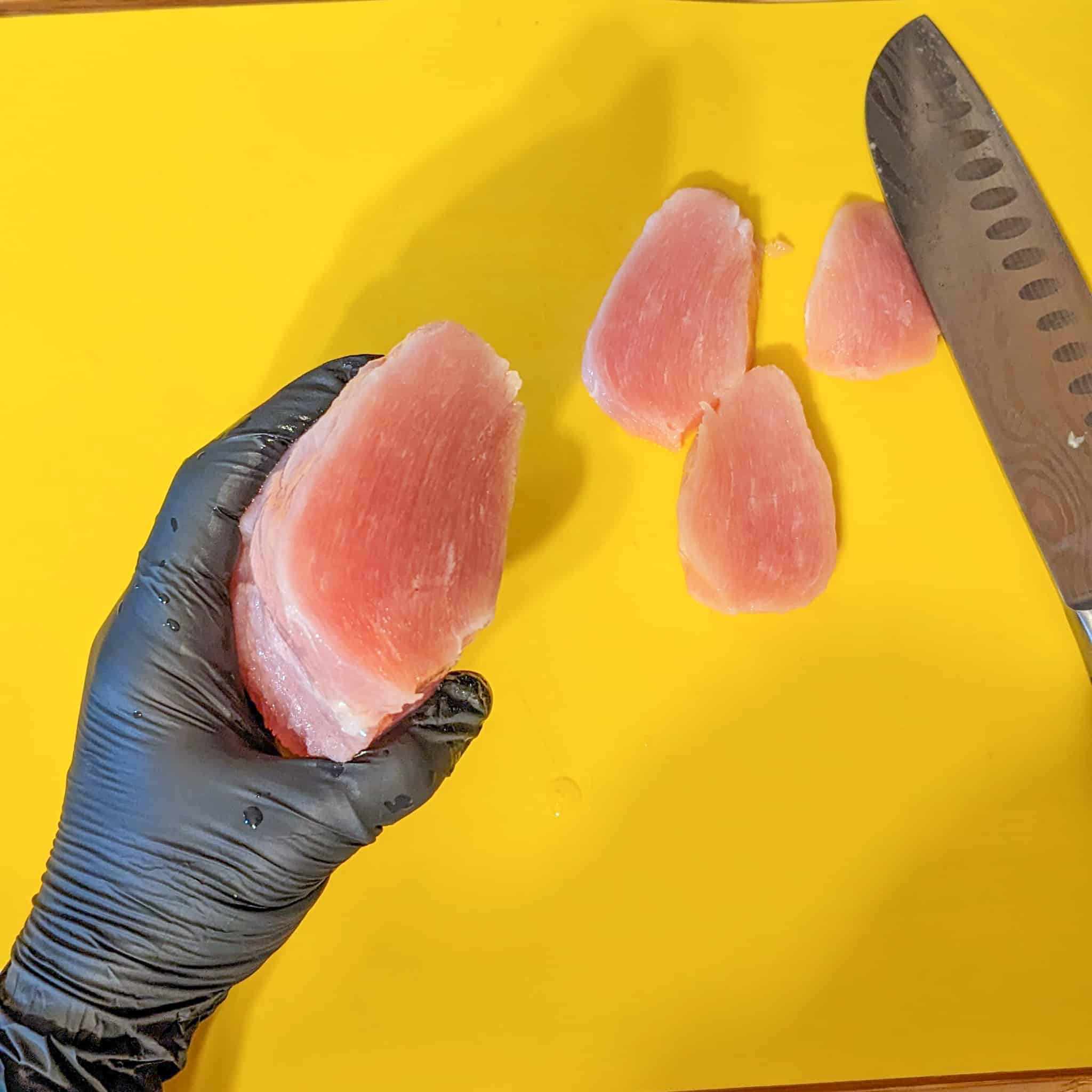
The knife goes easily through when slicing half-thawed chicken breast.

Thus giving you more control over the knife when you slice.
My Rating: ⭐⭐⭐
Purchased: 06/07/2022
Update: 08/19/24
My Review: These Fotouzy Cutting Board Mats are fantastic! They adhere well to granite, and I often use the “yellow chicken,” “green banana,” and “red cow” mats to prevent cross-contamination. The color coding helps me keep raw poultry, fruit, and red meat separate, protecting my wooden board from raw juices. They're flexible, easy to clean, and store, and a damp paper towel underneath keeps them in place. You can see them in action in my Chicken Prepping post in Cook's Notebook.
These BPA-free, non-porous mats are dishwasher-safe and feature anti-skid backing for secure use, making them a must-have for any kitchen.
Update 08/19/24: I still have these but prefer the cutting boards over the mats. And the mats are not steady. But they are dishwasher safe and wide enough to cover my wooden cutting board and great for when I zest and need to transfer them instead of scraping them off my board. So, I gave this a 3 out of 5.
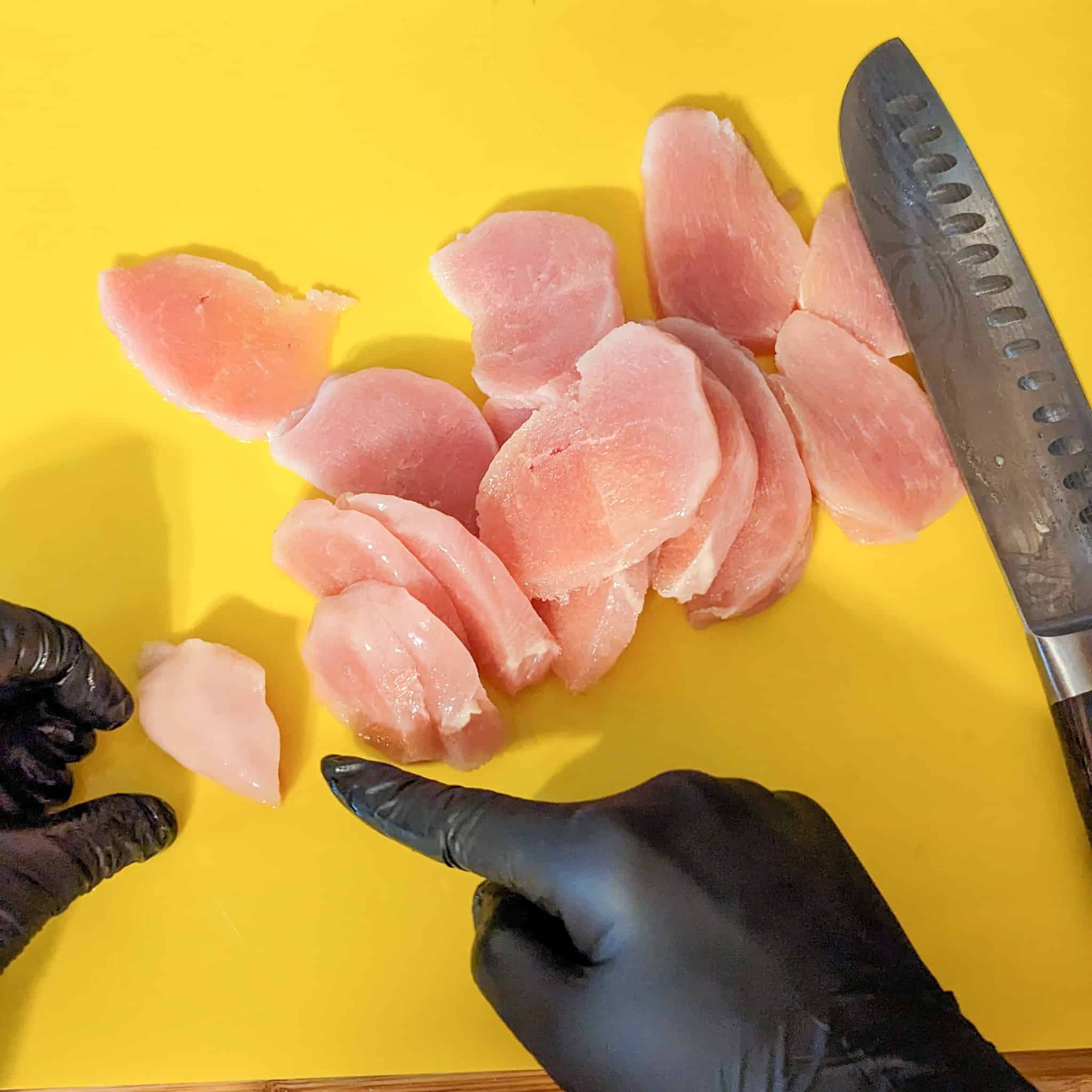
To make the tip as uniform as the slices, you will butterfly it.
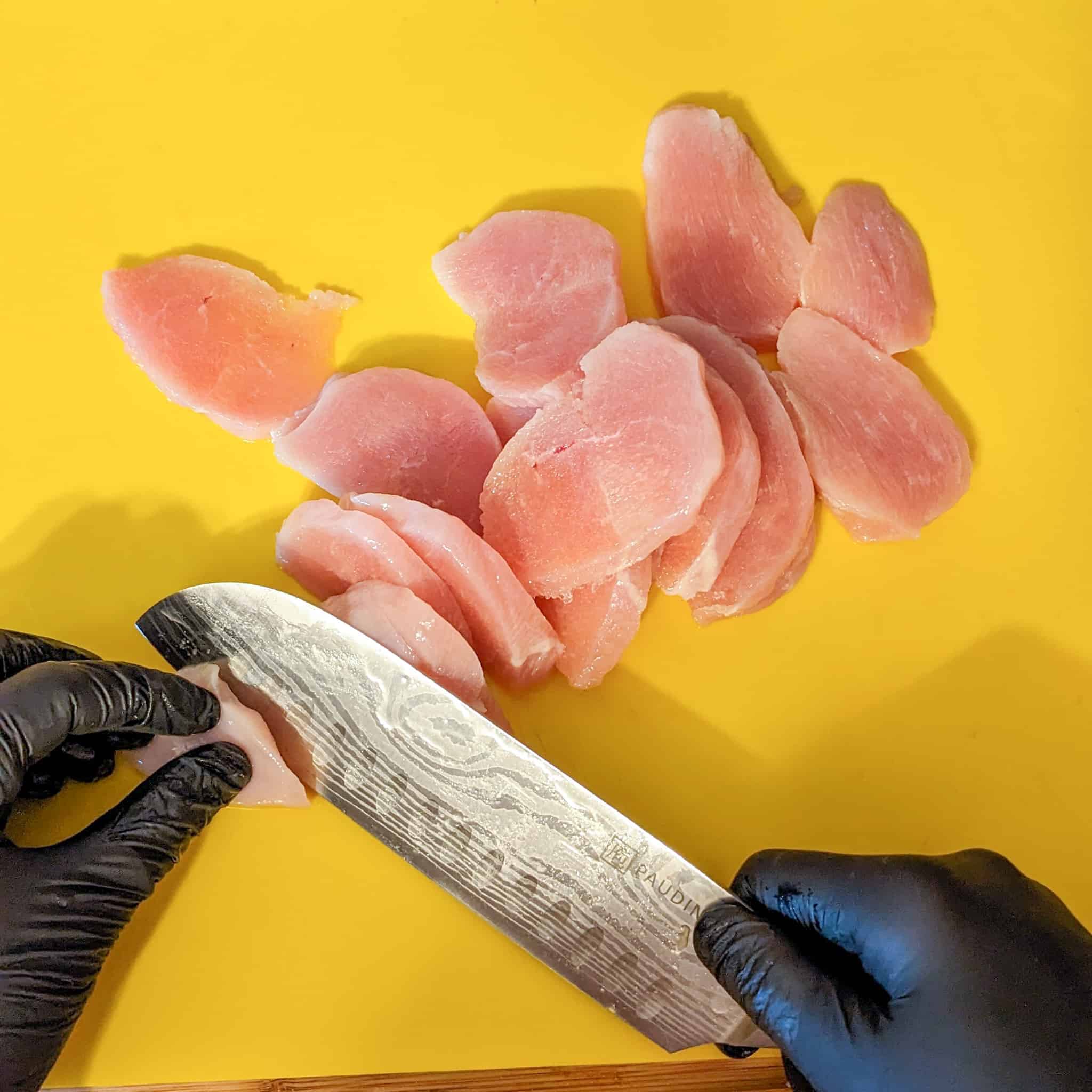
Do this by gently slicing it in half while keeping it intact.
My Rating: ⭐⭐⭐⭐⭐
Purchased: 01/01/22
Update: 10/16/24
My Review: I highly recommend the ForPro Professional Collection Disposable Nitrile Gloves. They’re food-safe, powder-free, and latex-free, making them perfect for cooking. I’ve ordered these several times and use them both personally and for my videos. The gloves are durable and chemical-resistant, offering excellent protection while handling raw ingredients. When pressed for time, they’re my go-to for preventing cross-contamination without needing to wash my hands constantly. A must-have for any busy kitchen!
Paudin Santoku Knife

This 7-inch Paudin Santoku Knife is well-made. It's also super solid and multi-functional. It is made with high-carbon steel, so it will not rust. In addition, slicing meat like fish is easier with the grooves; it doesn’t stick to the knife.
The handle also has an excellent grip and is not heavy. And it’s beautiful! This size is also perfect for cutting large-to-small ingredients.
Furthermore, the blade has a little curve, making slicing easier with a rocking motion. This was also excellent for prepping and cutting vegetables for the Israeli Couscous and Roasted Vegetables Recipe.
Not only do I still have it, and it's still going strong, but also I love it.
My Rating: ⭐⭐⭐⭐⭐
Purchased: 10/17/21
Update: 08/19/24
My Review: This knife is well-made. Super solid and multi-functional. It is made with high-carbon steel, so it will not rust. Slicing meat like fish is easier with the grooves. It doesn’t stick to the knife. The handle has an excellent grip, and it's not heavy. For some background, a Santoku is a versatile Japanese kitchen knife characterized by its straight edge and "sheepsfoot" blade, designed for slicing, dicing, and chopping with precision. Its name means "three virtues," referring to its ability to handle meat, fish, and vegetables efficiently, making it a staple in both professional and home kitchens.
Dimond Slit Chicken Breast (Video & Pictures)
Diamond slitting involves making shallow, diagonal cuts in a crisscross pattern across the surface of a chicken breast, creating a series of diamond-shaped slits.
This technique improves:
- Marinade absorption
- Makes the chicken more flavorful and tender
- Promotes even cooking
- Helps the chicken to cook faster
- Prevents it from drying out
Additionally, the increased surface area created by the slits enhances browning, resulting in a visually appealing texture that adds depth to your dish.
Video
Prepare the Chicken Breast
Place the chicken breast on a cutting board. Ensure the surface is stable, and pat the chicken dry with paper towels for a better grip and cleaner cuts.

Using a sharp knife, make diagonal cuts about ¼ inch deep and ½ inch apart across the chicken breast. Be careful not to cut all the way through the meat.

Turn the chicken breast 90 degrees and repeat the diagonal cuts in the opposite direction.

Intersecting the first set of cuts to form a diamond pattern.

This technique allows for better marinade absorption and even cooking.
Butterfly Chicken Breast (Pictures)
Butterflied chicken breast is a versatile ingredient that can be used in various delicious dishes for:
- Grilling the flattened shape allows for even cooking and quick preparation.
- Stuffing it with cheese, herbs, and vegetables to create flavorful, gourmet chicken roulades.
- Bread and fried (or baked) to make crispy and tender chicken cutlets, served on sandwiches or with pasta.
- Quickly stir-fried or sauteed, adding a protein boost to your favorite recipes in a jiffy.

Place the chicken breast flat on a cutting board at a 45-degree angle, with the thickest part at the top. If you cut with your left hand, the chicken breast will face the opposite direction.

Hold your whole hand on the chicken breast to hold it steady. Then, take your knife and begin slicing from the thickest part to the thinnest while keeping the long side away from you intact.

While slicing, you will try to feel where the knife is, ensuring it stays in the center.

Don't worry about not getting it right on your first try. Practice makes perfect.

You can take it a step further by pounding out the thickest part of the chicken. You can use a meat pounder with plastic wrap on the chicken. Just ensure to flip before pounding, and pound the skin side of the chicken to prevent tearing.
Don't stop there! Learn how to bread your chicken cutlets.
Benefits of Butterflying Chicken Breast
It’s all about reducing that cooking time and having the ability to sear the chicken on high heat, quickly cooking it and making it super juicy. Making this perfect for breaded chicken breast, the chicken will be done while it is golden brown when frying with no need to finish it in the oven.
Chicken Cutlets (Pictures)
Small chicken cutlets can be quickly pan-fried or grilled for a speedy weeknight dinner, making delicious chicken sandwiches or wraps. They're also excellent for making bite-sized appetizers by breading and frying them as chicken tenders or nuggets, making them perfect for dipping in your favorite sauces.
Small chicken cutlets can also be diced or sliced to top salads, pasta dishes, or stir-fries, adding a flavorful and protein-packed element to your meals.
Try using this method in the Loaded Lemon Pepper Chicken Pasta recipe.

Lay your chicken breast flat horizontally on a cutting board for raw chicken.
If you are right-handed, you will lay the thickest part of the chicken breast on the right side.

Begin by placing your knife blade towards the middle of the thick side of the chicken breast.

Lay your hand horizontally flat on top of the chicken breast, matching the orientation of the chicken breast.

As you slice the chicken, you will use the feeling from the hand laying on the chicken breast to remain in the center to cut two even slices. Note: This will take practice; you may not get it right the first time, but don’t worry. Take it further by pounding the chicken out for uniform cooking.
For Small Chicken Cutlets

After you have divided the chicken breast entirely, you can either continue to make small portions by cutting it into thirds or use a half-sized portion, depending on your preference and the recipe you are cooking. For example, this half-sized portion would be suitable for Chicken Parmesan.

Or you can continue to make small cutlet pieces by dividing each piece into three or two pieces. This would be great for stir-fries or tossing into pasta.
Why Cut into Cutlets?
This is great for faster and even cooking. Even pieces cook simultaneously, so you won’t have to worry about undercooked one piece. And the thin slices make it easier to cook dishes in less time.
Panko Breaded (Video)
In this short cooking video, I'll take you through the easy process of creating crispy, golden-brown chicken breast by breading it with panko breadcrumbs. Join me as I share my step-by-step guide to achieving the perfect crunchy coating, making this dish a family favorite for any meal.
Pounding Out (Video)
In this informative cooking video, we'll explore the culinary technique of pounding chicken breast and discover its numerous benefits in preparing tender and evenly cooked chicken dishes.
Join me as I demonstrate how this simple method can transform your chicken recipes and elevate your culinary skills.
Shredding (Video)
In this practical cooking tutorial video, I'll show two efficient methods for quickly shredding chicken, making meal prep a breeze. I'll demonstrate these techniques to help you effortlessly transform tender, cooked chicken into versatile, shredded goodness for a variety of recipes. Like the Pumpkin Gnocchi Chicken Soup recipe.
Cutting into Large Chunks (Video)
Using large chicken chunks in a recipe provides a hearty and satisfying texture, offering a substantial bite that can make a dish more filling and satisfying. These sizeable chicken pieces retain moisture better during cooking, ensuring a juicy and flavorful outcome in your culinary creations.
In addition, this method would be the first step in making ground chicken before adding it to your meat grinder or food processor, just like in the Chicken Meatballs & Israeli Couscous Vegetable Soup.
Cutting into Small Dice (Video)
Small-dicing chicken breasts offer quicker cooking times and even distribution of chicken in dishes like stir-fries and casseroles. The smaller pieces absorb flavors and seasonings more efficiently, resulting in a well-balanced and flavorful dish.
Spatchcock (Pictures & Video)
Spatchcocking, also known as butterflying, is a method of preparing poultry that involves removing the backbone and flattening the bird to cook it more evenly and quickly. Here are the steps to spatchcock a whole chicken:
Before Starting:
- Prepare your workspace: Ensure your cutting board and tools are clean and ready. Also, wash your hands thoroughly and/or wear gloves.
- Inspect the chicken: Place the whole chicken breast-side down on the cutting board. Ensure it's properly thawed and free of any giblets or innards. If there are giblets inside the chicken cavity, remove them.
Remove the Backbone

Start by locating the neck and tail ends of the chicken. The neck end will have a small skin flap and excess fat, while the tail end is the more pointed part.

Using kitchen shears or a sharp knife, cut along one side of the backbone from the tail end to the neck end.

Stay as close to the backbone as possible, and be careful not to cut into the meat.

Repeat the same cut on the other side of the backbone to completely remove it.
Flatten the Chicken

You can save the backbone to make stock or discard it.

After removing the backbone, open the chicken up like a book. Use the palms of your hands to press down firmly on the breastbone to flatten the chicken. This helps the chicken cook more evenly.

Extra Tips
- Trim Any Excess Fat and Skin - If there is any excess fat or skin, you can trim it to your liking. And be careful not to cut into the meat too much.
- Tuck the Wingtips - The wingtips can sometimes burn during roasting, so you can tuck them behind the breast to prevent this. Just fold each wingtip under the breast. This can be a little tricky, but it doesn't have to be perfectly even on both sides.
- Optional: Tie the legs - If you'd like, you can use cooking twine to tie the legs together to help the chicken maintain its flattened shape and cook evenly. Just cross the legs and tie them together securely.
Now, your spatchcocked chicken is ready to be roasted, grilled, or cooked using your preferred method. This method ensures even cooking and shorter cooking times, making it a popular choice for those who want to cook a whole chicken quickly and evenly.
Video
👀👆 SUBSCRIBE!
Prevent Cross-Contamination
To prevent cross-contamination, always slice chicken on a designated cutting board for raw poultry, thoroughly wash your hands if not using gloves, and sanitize all surfaces and tools after handling raw meat, especially if you wear rings.
- Slice chicken on a cutting board for raw poultry to help prevent cross-contamination between raw and cooked ingredients.
- If you didn’t wear gloves, ensure that you thoroughly wash your hands with comfortably hot water for a minimum of 20 seconds with antibacterial soap to prevent any possible food-borne disease from spreading.
- In addition, sanitize your sink, cutting board, and knife after every use when cutting raw meats.
- I usually sanitize with Pine Sol diluted with water in a spray bottle.
- The video above was shot about a year ago after posting this tip; because I wear rings, I make sure to use gloves now since bacteria may not be washed away if you wear rings.
- Take your rings off, or wear gloves just to be safe!
Food Safety First!
These flexible color-coded cutting mats are super helpful when preventing cross-contamination. Additionally, I often use yellow for poultry, green for fruits, and red for red meat!
The other colors are also used respectively. And because I have a wooden cutting board and don’t want raw juices seeping into the wood or eating a garlicky banana.
The thin and flexible material also makes them easy to clean and store conveniently, using the Cabinet Door Organizer to store them.

Stop Your Cutting Board from Slipping
This is an important one, especially when it comes to safety. Placing a grip liner or a damp kitchen or paper towel directly flat under your cutting board is always a good practice to prevent your cutting board from slipping, which will prevent fewer kitchen knife accidents. Learn more here.
Searing (Video)
Remove Excess Moisture!
To prevent chicken breasts from sticking to the pan when searing, start by ensuring the meat is dry before placing it in the hot pan. Pat the chicken breasts with paper towels to remove any excess moisture and allow seasoning to adhere.
Preheat Technique
Next, preheat the pan over medium-high heat before adding any oil, and then add a high smoke point oil such as vegetable or grapeseed oil. Adding the oil to the hot pan helps create a barrier. Learn more about hot smoke points oils.
Add Less
Allow the oil to heat up right before it smokes, and gently place the chicken breasts in the pan. Avoid overcrowding the pan to allow for even heat distribution and a better sear. The more you add, the colder the pan will get.
Finally, resist the temptation to move the chicken around too much once it's in the pan; let it develop a golden crust before flipping. Depending on the meat, this usually takes about 2 to 3 minutes.
Video: Prevent Chicken from Sticking
Combined with using the right oil and proper preheating skills, these steps will help you achieve a beautifully seared chicken without the frustration of sticking!
Marinating (Video)
Resealable Bags
Using sealing bags helps create less mess in the kitchen by having fewer dishes and utensils to wash, even gloves to rub the chicken. Place everything in the bag, let the air out, and seal it well. And the best part is the message! You can then place it in the fridge or freezer.
Plus, it is a great way for meal prep. Make a bunch of these with your favorite marinade ahead of time and freeze. Take them out. Thaw in the fridge, remove from the bag, and cook! Super easy!
Chicken Recipes
Choose a quick and easy recipe to get started.
- Quick Spicy Potstickers | Chili Momo Tibetan Style
- Beituti Chicken Shawarma Rice Bowl | Quick and Easy
- Air Fryer Chicken Shawarma | Quick with Beituti
- Creamy Curry Chicken Gnocchi Soup | Caribbean Style
More Cook's Notebook
Become a better home cook with cooking tips to help you cook more efficiently on Cook's Notebook tab.
- Mastering FIFO: The Simple Method to Keep Your Food Fresh
- How to Prevent Cross-Contamination in Your Kitchen
- Diamond Slit Chicken Breast (Video & Pictures)
- How to Slice Chicken Perfectly Every Time
Comment or Question?
I'd love to hear your thoughts, questions, or experiences with prepping chicken—leave a comment or question and get a response from a professionally trained chef!





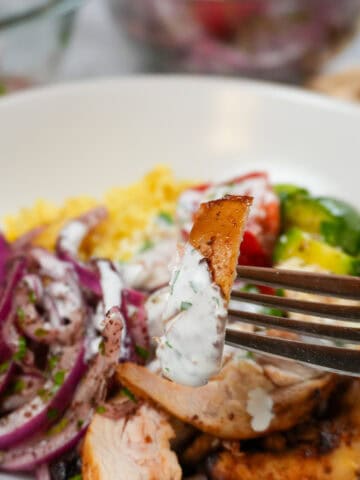

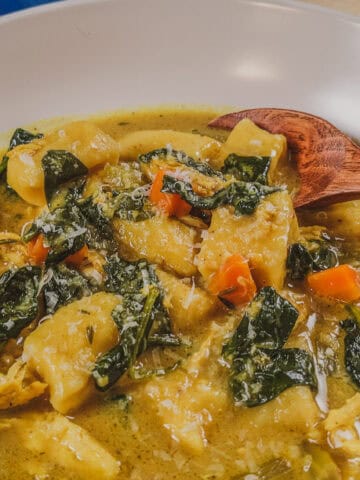








Leave a Reply